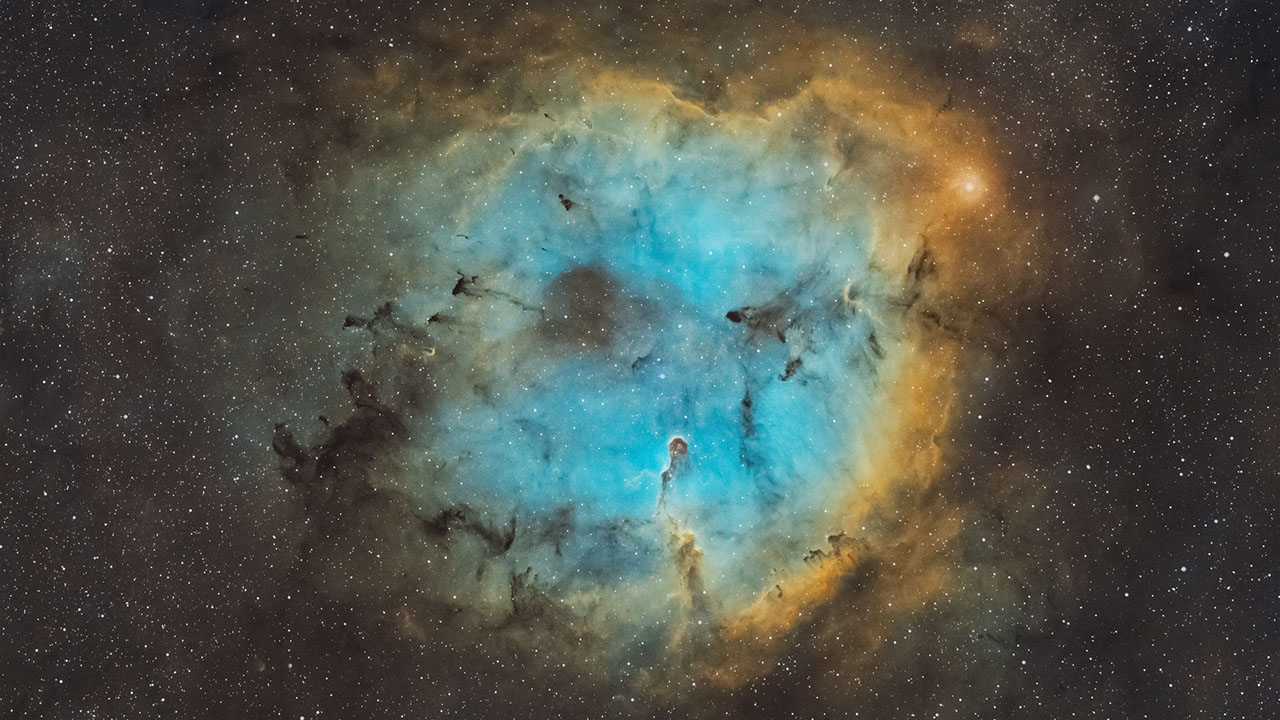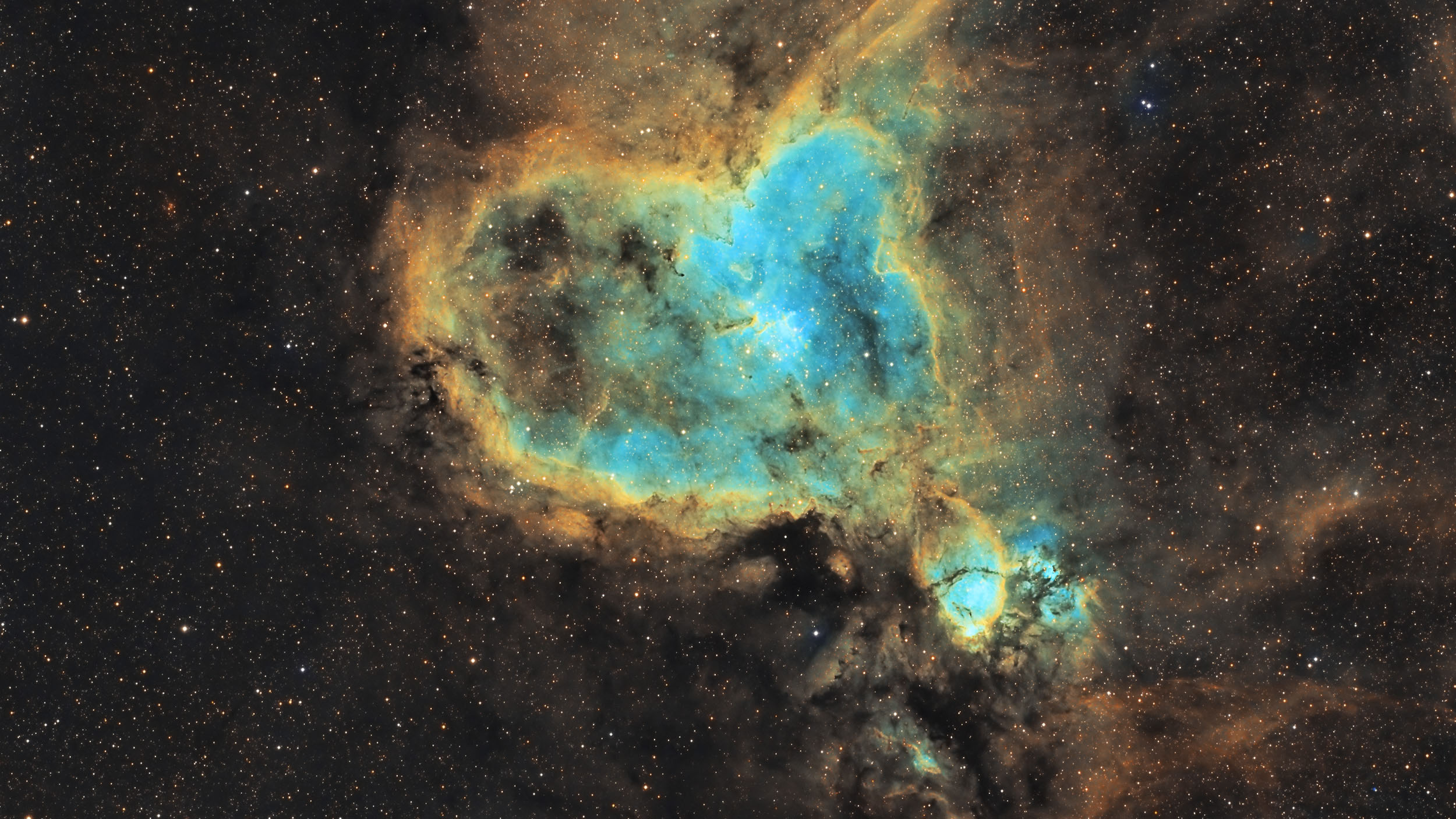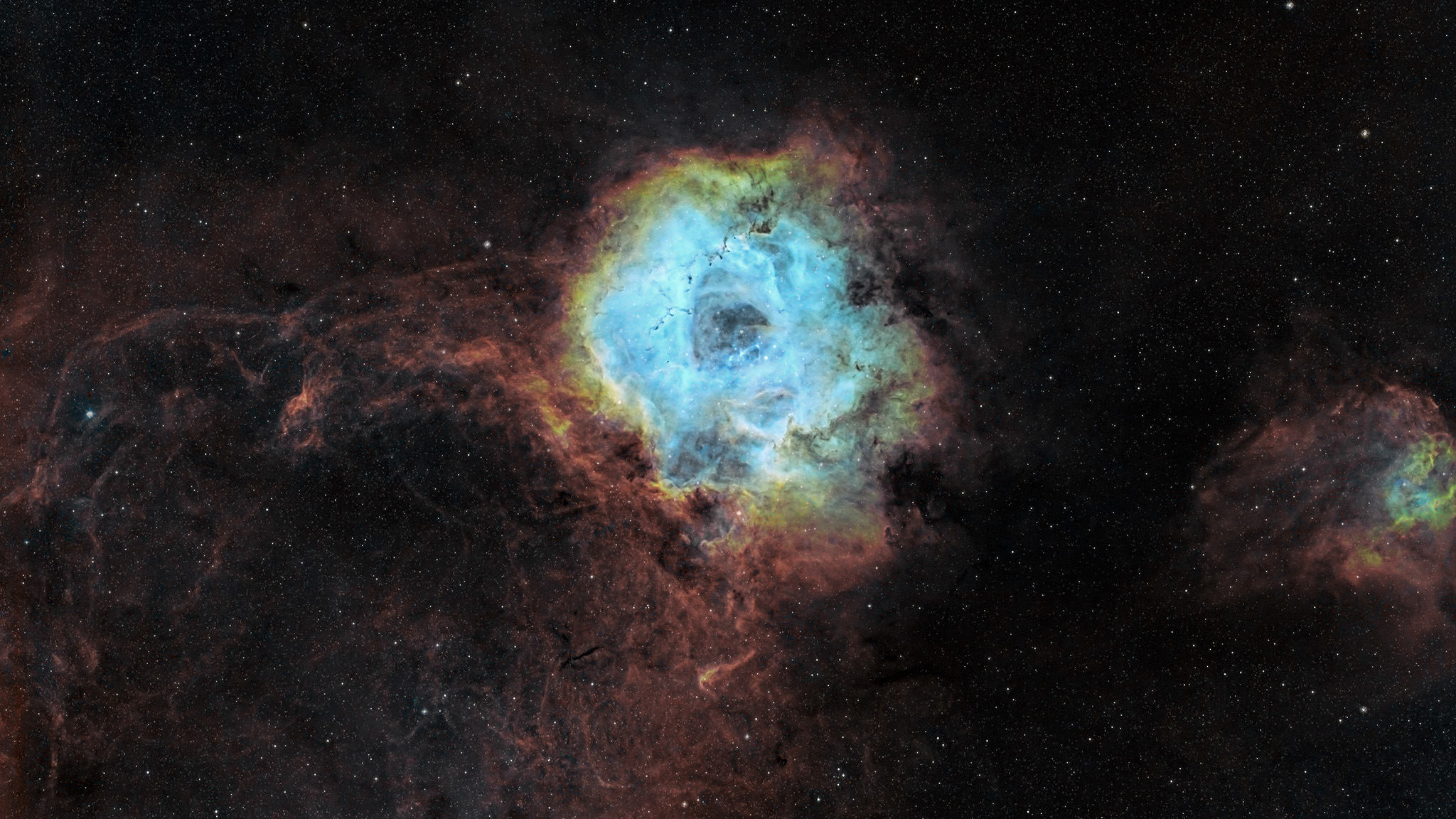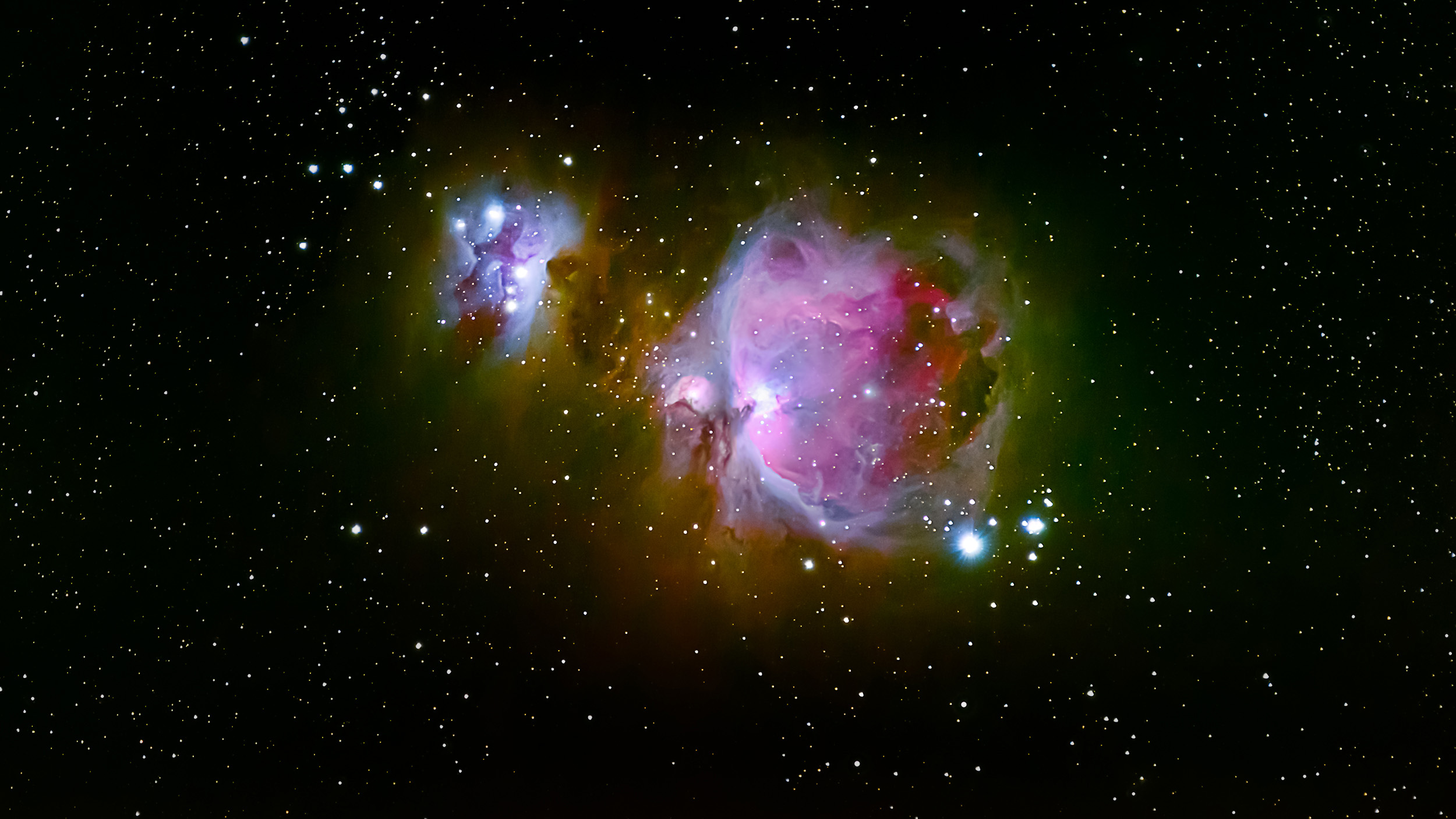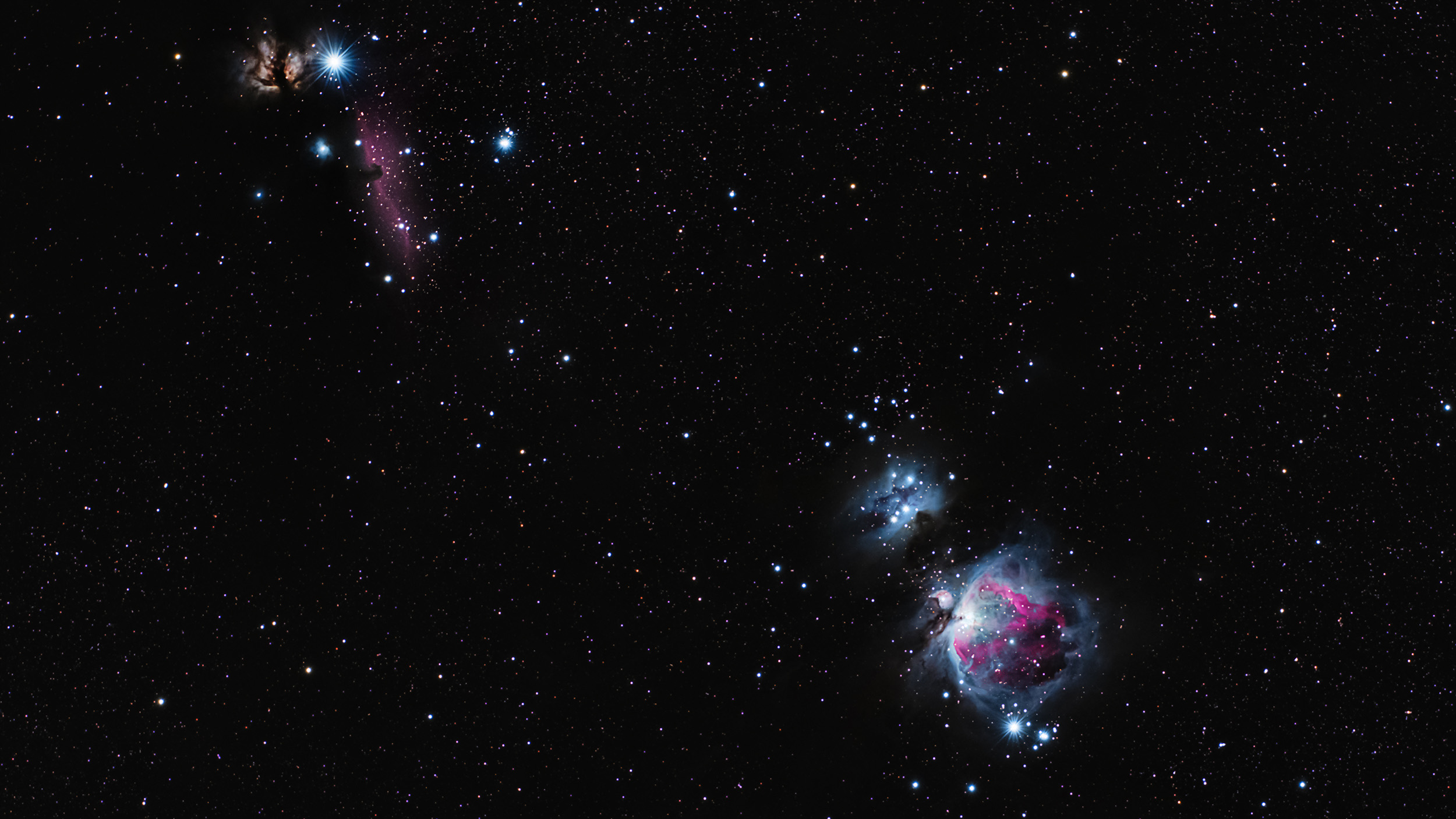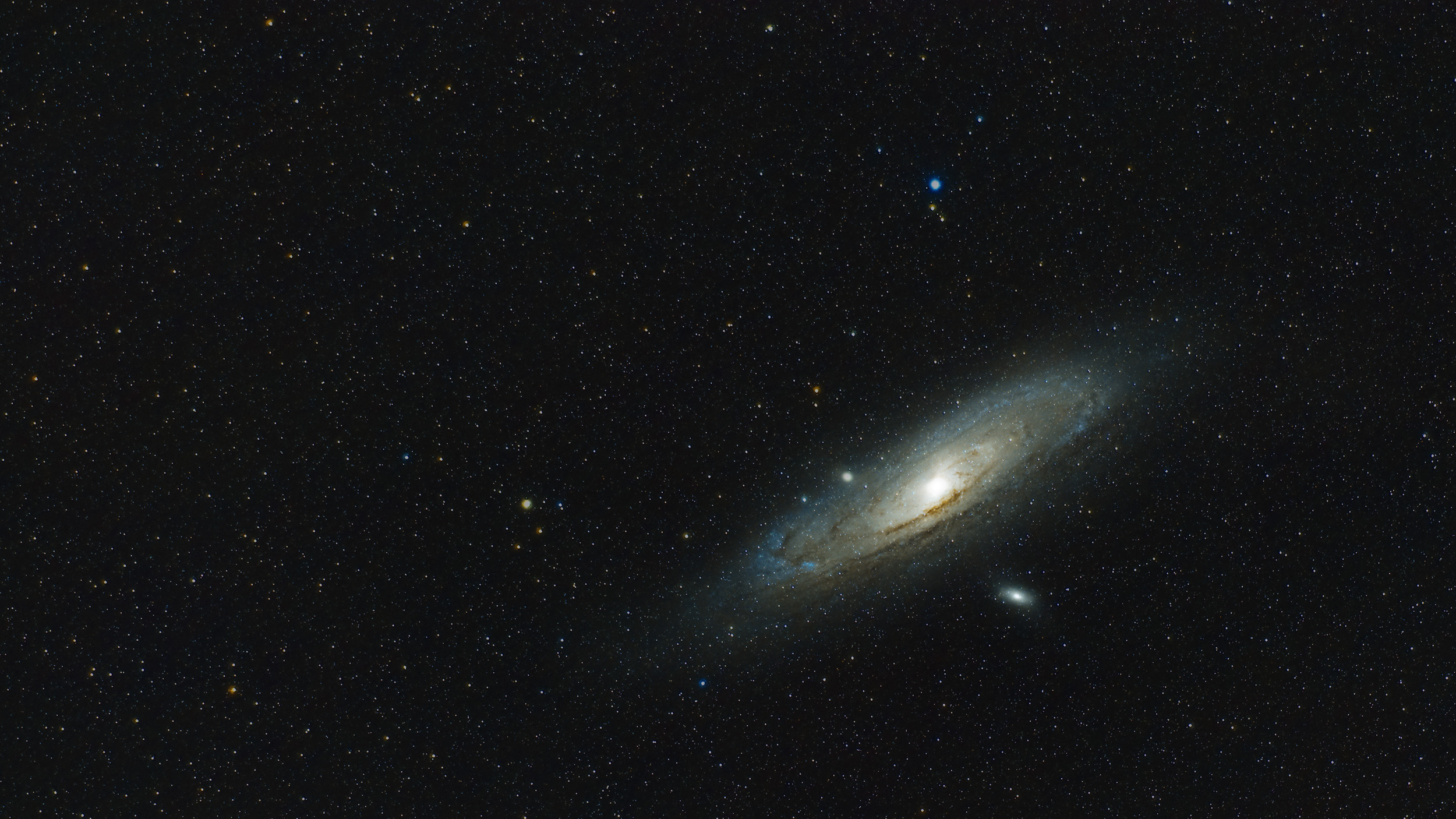Heart Nebula
The Heart Nebula is 7,500 light years away from Earth and located in the Perseus Arm of the Galaxy in the constellation Cassiopeia.
It is an emission nebula showing glowing ionized hydrogen gas and darker dust lanes and was discovered by William Herschel on 3 November 1787. The nebula’s intense output and its shape are driven by the radiation emanating from a small group of stars near the nebula’s center.
The nebula is made up of ionized Oxygen and Sulfur gasses, responsible for the rich blue and orange colors seen in this narrowband image. The shape of the nebula is driven by stellar winds from the hot stars in its core. The nebula spans almost 2 degrees in the sky, covering an area four times that of the diameter of the full moon.
RIGHT ASCENSION
02h 33m 22s
DECLINATION
+61° 26′ 36″
DISTANCE
7,500 ly
The narrow band image consists of hundreds of separate images each capturing specific wavelengths of light, using filters for Oxygen III (OIII : 496nm), Hydrogen-Alpha (Ha : 656nm) and Sulphur II (SII : 672nm). These are then combined to produce a false color image using PixInsight and Photoshop.
